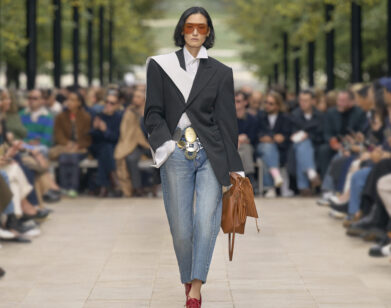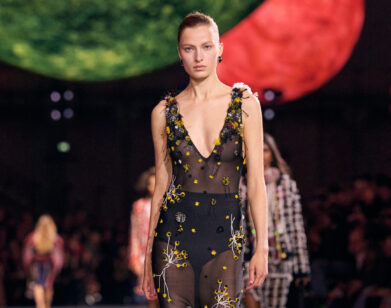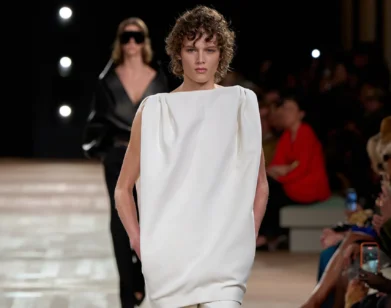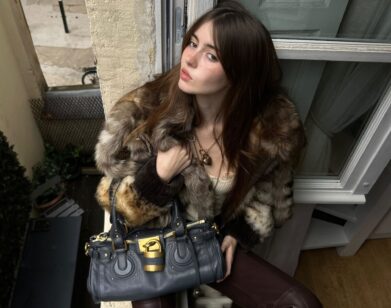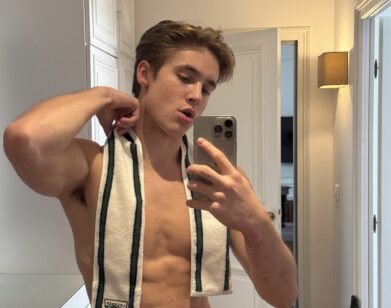Y2K
Jonathan Lyndon Chase on Baggy Jeans, Conjoined Triplets, and Their Acne Studios Takeover
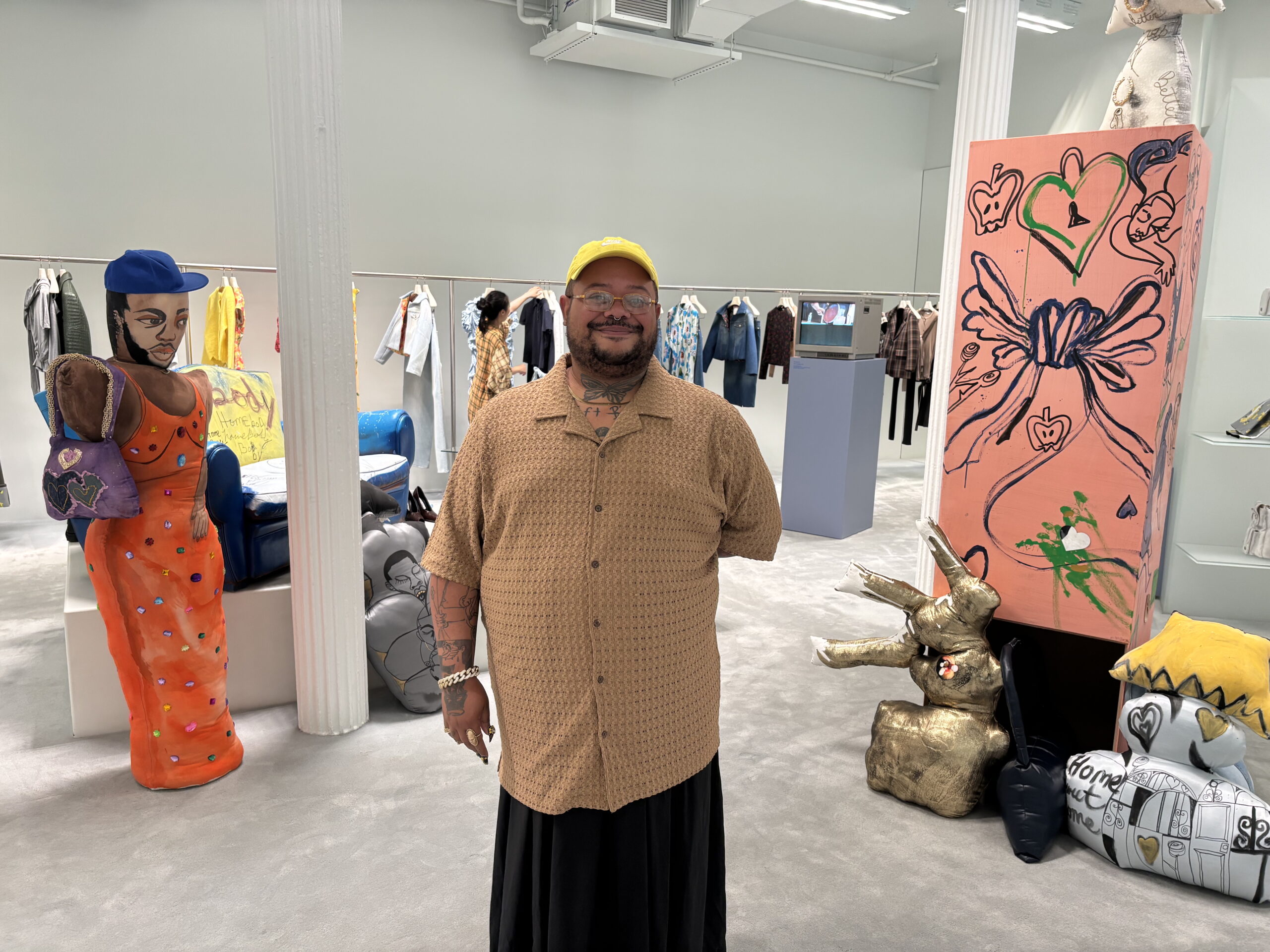
Jonathan Lyndon Chase. All photos by Emily Sandstrom.
WEDNESDAY 10:45AM, MAY 7, 2025 SOHO
How far apart are the worlds of fashion and art, exactly? For Jonathan Lyndon Chase, the gap is increasingly slim. This spring, the Philadelphia-based artist continues their collaboration with Acne Studios by transforming the brand’s SoHo store into an immersive sculptural maze. Winding between, above, and behind racks of clothing are roughly 60 of Chase’s works—soft sculptures, ceramics, and newer graffiti-covered found objects—that collectively evoke the feeling of a living room that’s been vandalized by a glamorous and somewhat angsty teen. Just before the store-turned-exhibition-site opened to the public yesterday, I caught up with Lyndon Chase to talk about their patchwork conjoined triplets, retail nostalgia, and the many meanings of denim.
———
EMILY SANDSTROM: Good morning and congratulations! The store looks incredible.
JONATHAN LYNDON CHASE: Thank you very much.
SANDSTROM: How are you feeling?
LYNDON CHASE: I’m feeling like, all of the feels. I’m really excited. It feels like electricity.
SANDSTROM: This is your second collaboration with Acne. Can you tell me about your relationship to the brand?
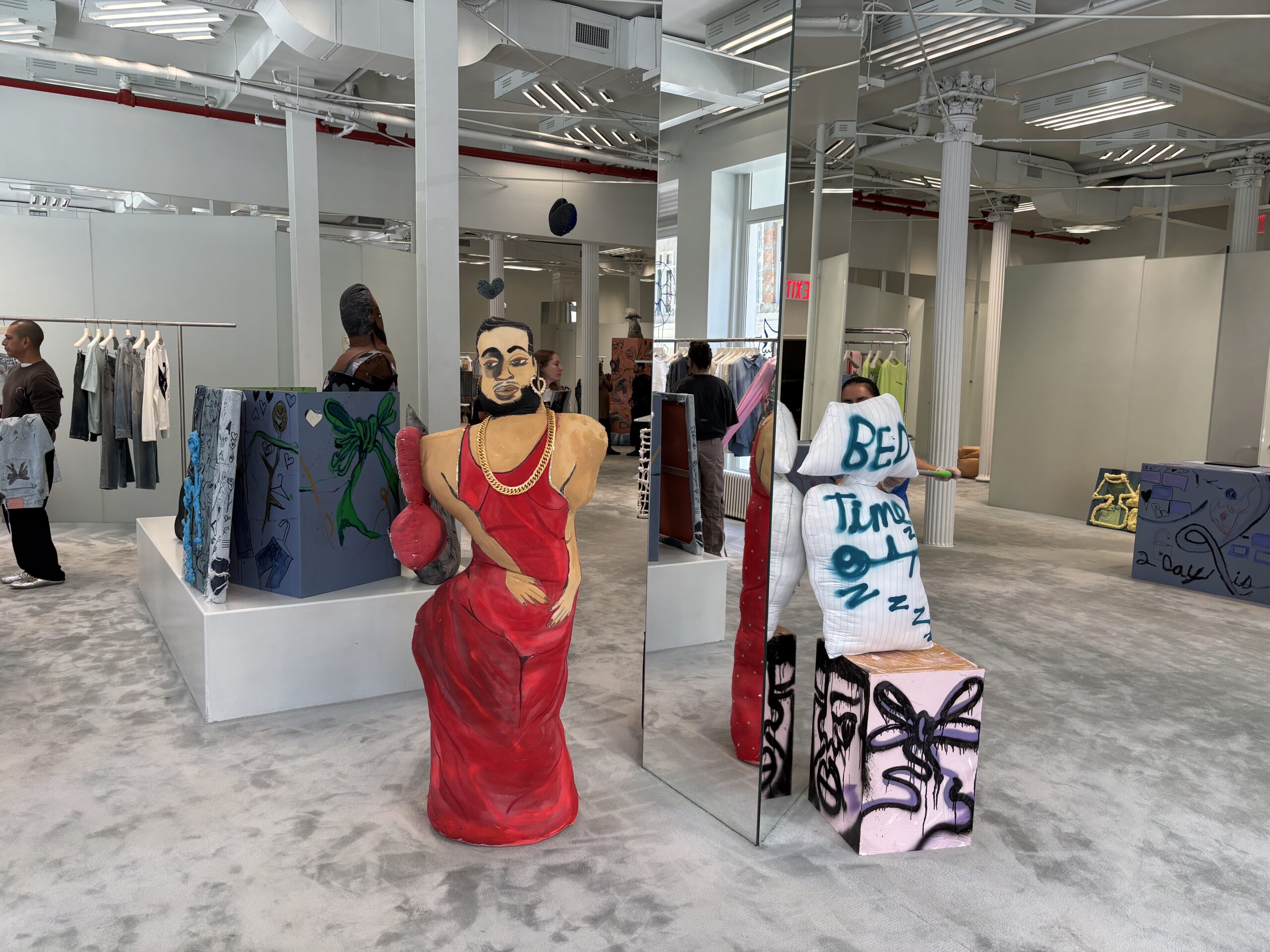
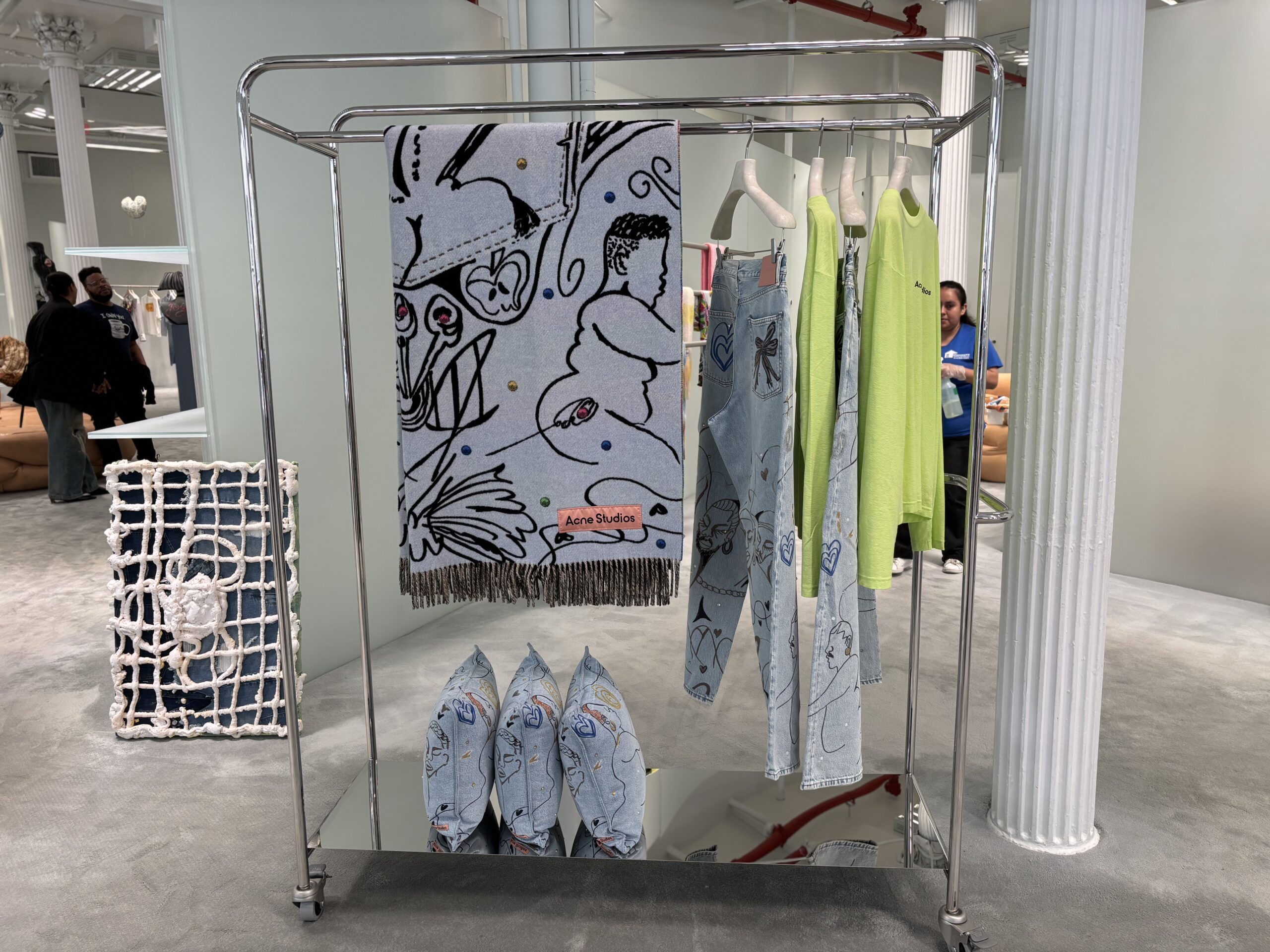
LYNDON CHASE: Yes. They reached out last year for me to do their installation for their runway at Paris Fashion Week. That started off by talking about what the brand was into: a down-to-earth quality, playfulness, and certain colors and textures, and that was really attractive to me. So I was responding to all of their garments that they produced for the runway show, and that resulted in around 80 soft sculptures in Philadelphia. And then we decided to make the addition of these found couches and domestic objects too, when I was there for about a month on site continuing to work. We’re talking a lot about playfulness, eroticism, paint splatters–something alien, but also down-to-earth. So these clashes or folding or melting into things that are familiar, but then also a bit different at the same time.
SANDSTROM: Every time I look around I see a new piece of work that I didn’t spot before. Are you scared someone’s going to break something? I feel like I nearly broke something.
LYNDON CHASE: No. But you know what? The sculptures, the soft ones, are deceptively heavy. One toppled over during the install last night and that person was like, “Oh, my god.” And I was like, “It’s a Tonka truck.” But that was a really cool, beautiful moment because of this idea of the fragility, and then how am I thinking about gender and durability. But being in an install situation here at the Greene Street store, that’s definitely something that’s running through my mind, because it’s a bit more in your face. You’re up close, you’re not following the same rules as you would in a museum or gallery. Which is crazy and exciting, right?
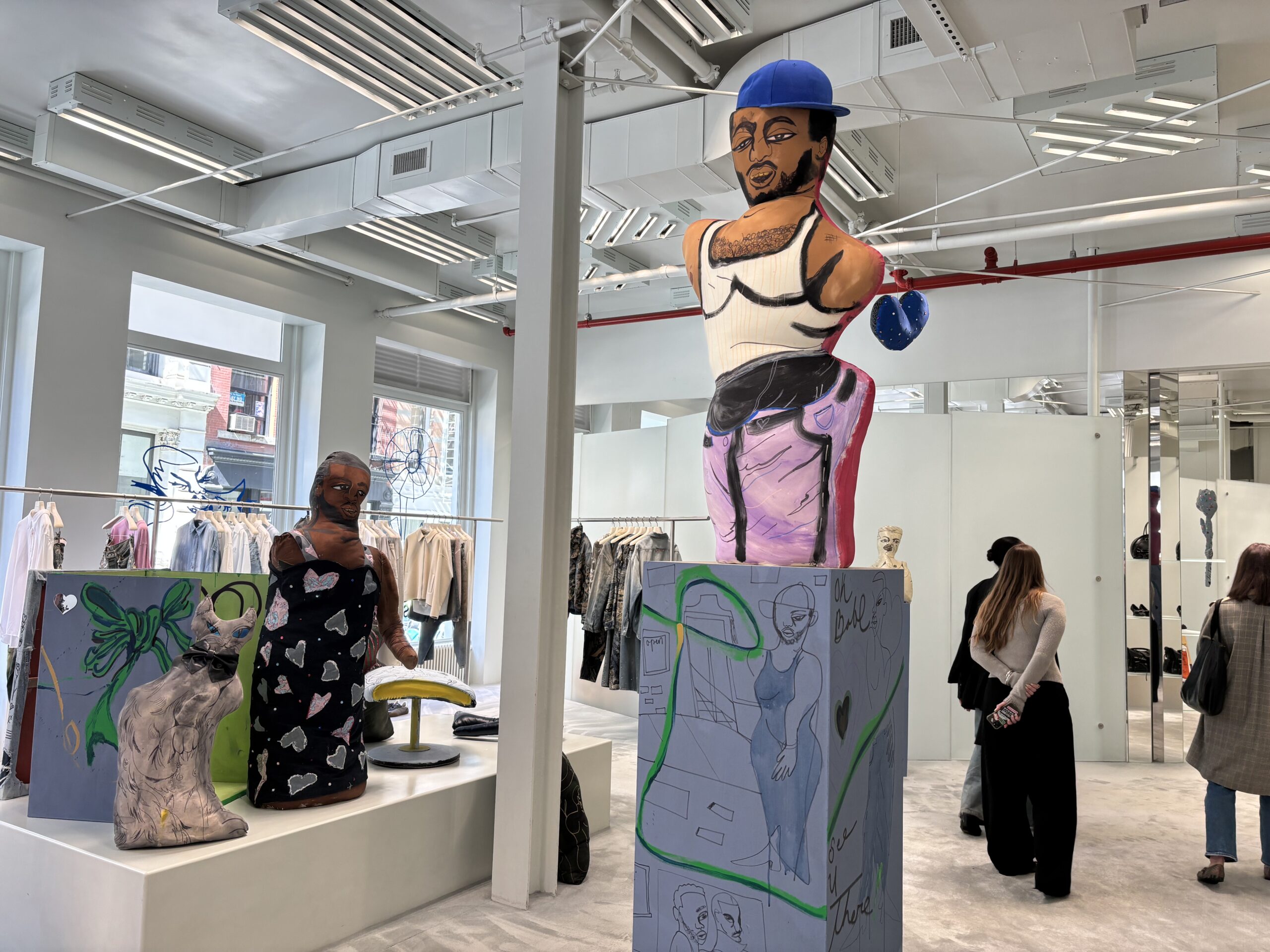
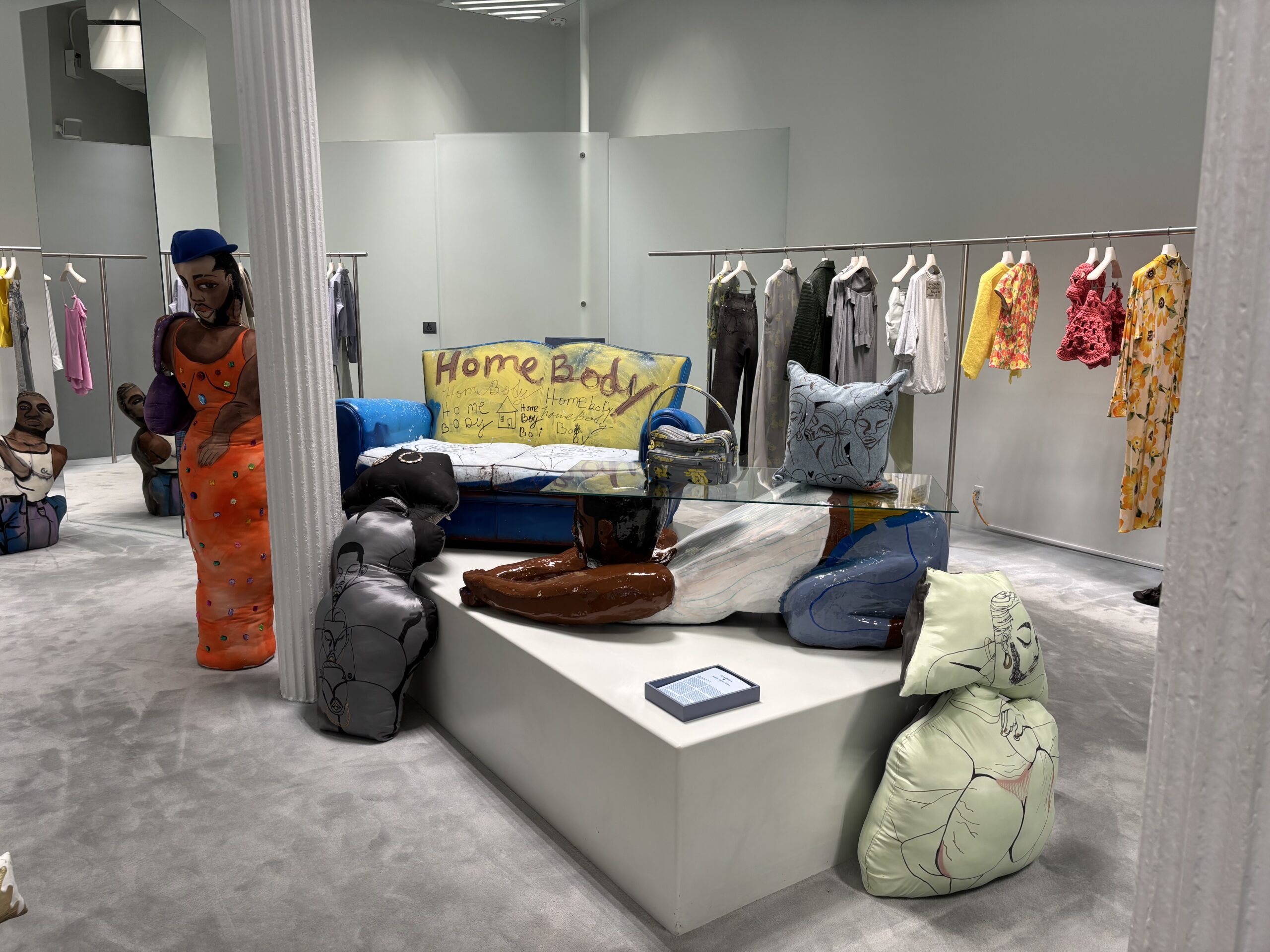 SANDSTROM: Absolutely. When I was reading about what this exhibition was going to be, I was thinking about the death of traditional retail spaces. What’s your relationship to them in general? Are you nostalgic?
SANDSTROM: Absolutely. When I was reading about what this exhibition was going to be, I was thinking about the death of traditional retail spaces. What’s your relationship to them in general? Are you nostalgic?
LYNDON CHASE: Oh goodness, girl. Okay, so years ago, I did this heavily mall retail-inspired installation, and I titled it The Death of the Mall. It was like Y2K era, emo-golf-scene kid, that kind of thing. So I definitely have a lot of nostalgia and memories for just shopping. And my work has a lot to do with domestic spaces, but also being in public spaces in the world. So I do have lots of visuals and interest in what it’s like as a person. It’s like shopping with shoes, purses–I have so many purses.
SANDSTROM: Love. What kind of purses?
LYNDON CHASE: Oh my goodness. So I have a few Gucci, a few Acne ones. And then, what do you call them? Knock-offs, whatever the kids call them now.
SANDSTROM: Like dupes?
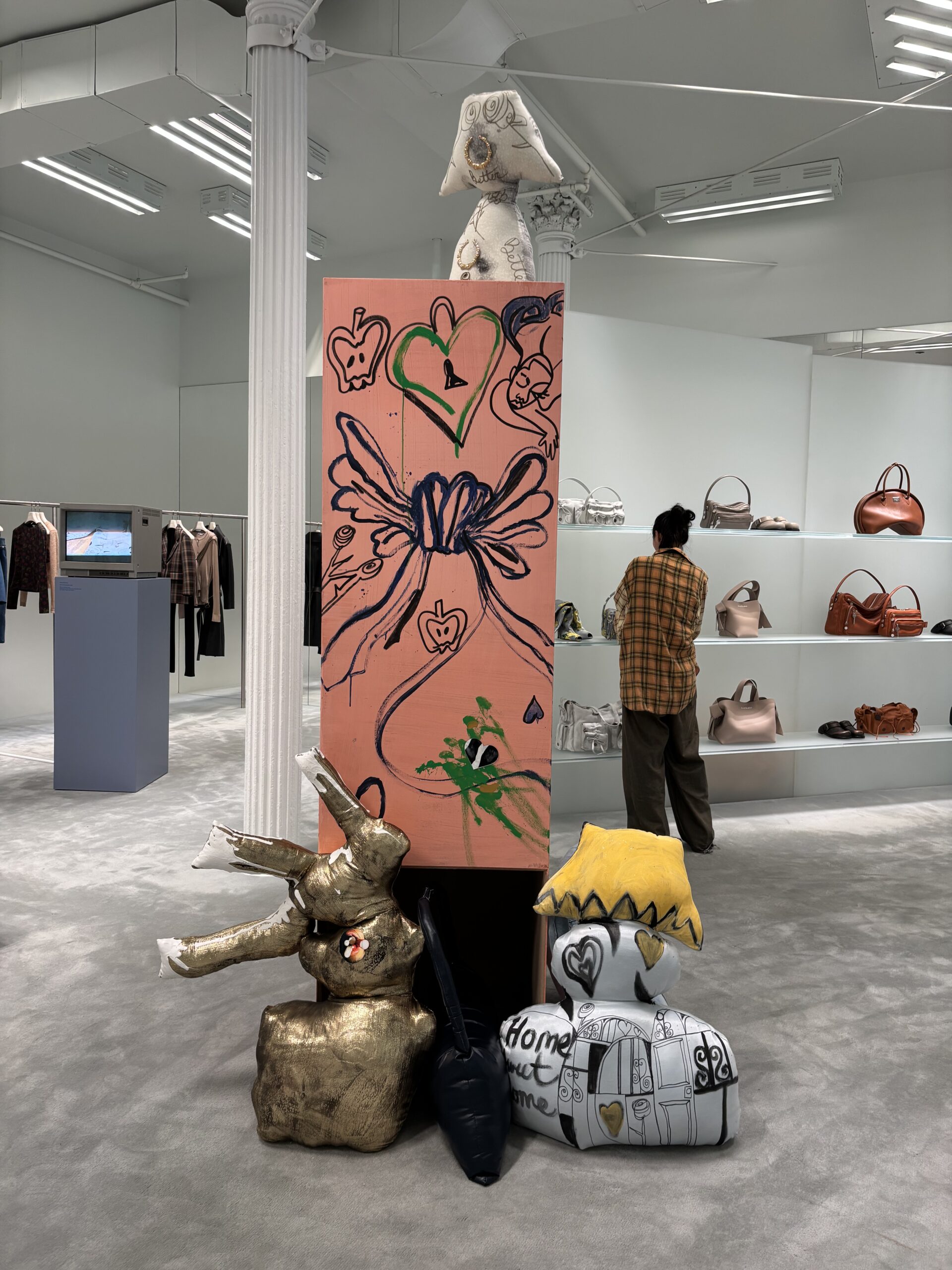
LYNDON CHASE: Yes. Any and anything. If it looks good, I’m there for it.
SANDSTROM: When you said Y2K, I was thinking about how this installation does feel quite angsty, like a coming-of-age kind of bedroom. My bedroom looks like this all the time, anyway. What does your bedroom look like?
LYNDON CHASE: Oh my goodness. My bedroom is pitch-black with some glitter in it. I have a really huge bed, and there’s clothes everywhere. I just like more and more and more maximalist. And with that, there’s a whole bunch of energy involved. So there’s anger, sadness, jealousy, these mixes of emotions and bodily sensations, like how we interact with the world—touch, taste, sound. I’m always searching after that human condition of relatability, and our bedrooms are safe spaces, almost portraits of ourselves.
SANDSTROM: Definitely. Why does he have three heads, by the way?
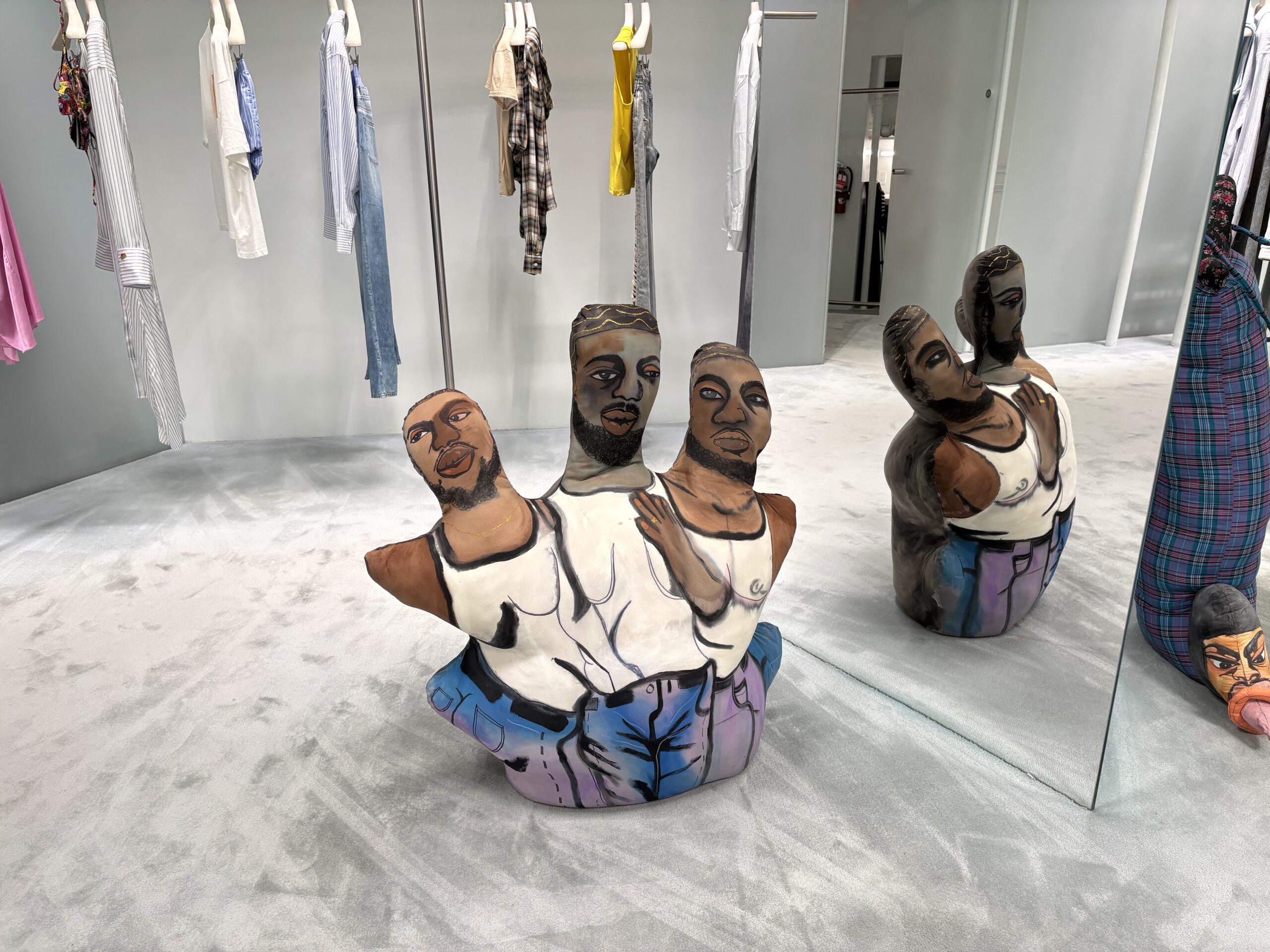
LYNDON CHASE: Oh, I love you asked this question. It’s this question of, are they the same person? Are they three different people? Or are they in flux, in time and motion? A lot of times when I do figures, having that question of identity and body-space relationship, we carry different facets of our personalities in us—the things we see on the surface, and then maybe what’s hidden beneath.
SANDSTROM: Totally. My co-worker just told me there are no living conjoined twins in America anymore. Apparently we’ve solved that now, medically.
LYNDON CHASE: Wow!
SANDSTROM: But you have to keep the representation going.
LYNDON CHASE: Absolutely.
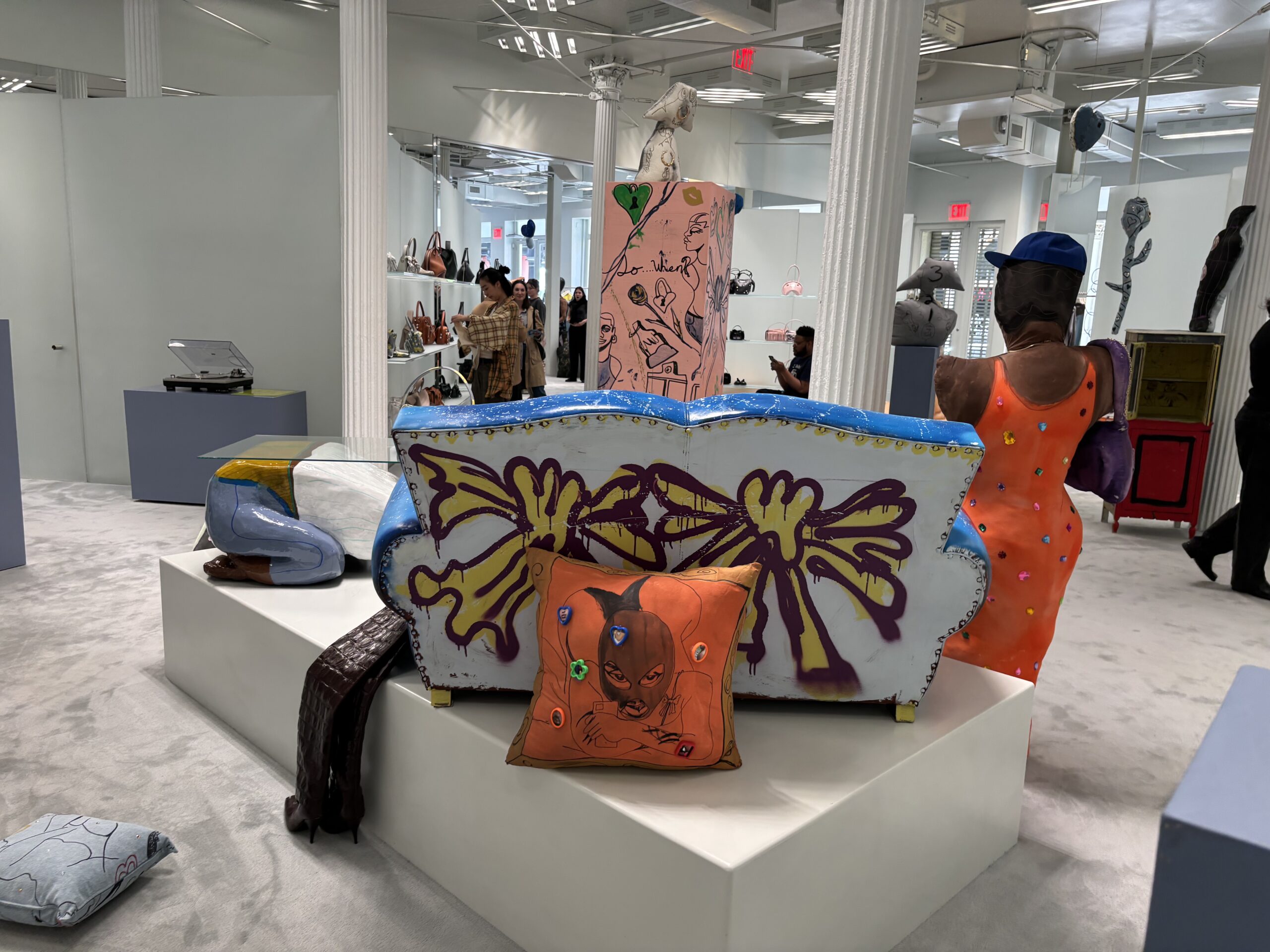
SANDSTROM: Since we’re at Acne, let’s talk about denim. What’s your favorite kind of jean? Baggy? Straight? Bootleg?
LYNDON CHASE: I feel like I’m more into baggy now. I do love a straight skinny leg jean, but I think baggy is where I’m at right now. I grew up with denim and scribbling on it. I grew up not coming from money or anything, just really regular-schmegular. So for me, the denim, it’s really just this everyday, working class, accessible thing, but then also this fun canvas to express yourself. It’s nostalgic for me, thinking of drawing on it during my adolescence. And then there’s also the nature of the material being very durable and rebellious. It just says so much. You think about activists using it, and people working heavily during the ’60s and the ’70s, and theres something very queer about it too. So I just think it’s so wonderful that it’s a reflection of us, of how our flesh suits carry multiple meanings.
SANDSTROM: For sure. In here it kind of feels like the world is your canvas. Even contained in certain sculptures, there are elements I didn’t expect.
LYNDON CHASE: I’m always thinking of immersion and how every person is their own individual world. Whether it’s the world of a finger, the world of a head, the world of a smile, the world of the bag, the world of the couch, right? So my goal when I wake up, I’m always like, “How can I just make worlds more intense and reflective and immersive?”


